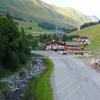I see that it has been about a couple of months since the Group 1 received their N. I would, for myself at least, be interested in knowing how things are going.
Any feedback would be most welcome.

Posted 11 July 2016 - 03:27 AM
I see that it has been about a couple of months since the Group 1 received their N. I would, for myself at least, be interested in knowing how things are going.
Any feedback would be most welcome.
Posted 11 July 2016 - 11:58 AM
I see that it has been about a couple of months since the Group 1 received their N. I would, for myself at least, be interested in knowing how things are going.
Any feedback would be most welcome.
I seem to remember that someone offered to coordinate this. But if this wasn't so, I'd be happy to coordinate and anonymize the results
Posted 11 July 2016 - 03:06 PM
This paper has me rethinking Nam, NA and NR:
http://sci-hub.bz/10...161209787185823
(NB http://sci-hub.bz for free access to research papers)
It would seem that NA is converted into Nam by the liver and its only when one doses above what the liver can handle that one gets NA into cells directly.
Also interesting is the NAD+ increase seen from Nam at the right dosage...
The only study looking at what happens to NR taken orally shows it to be slowly broken down to N and R at/by the gut lining.
(There was, IIRC, some tantalizing hints that this is 'standard procedure' for getting things through linings and membranes etc and that the two are rejoined on the other side....??)
That said; the only available evidence points to NR being nothing more than a Nicotinamide and D-Ribose slow release pill.
Everyone here seems more or less oblivious to the pivotal role Ribose play in the synthesis of NAD+ and ATP in both the de-novo and salvage pathways and the long time time and large amount of energy it takes for the body to produce its own. A quick Pubmed search for the effects of D-Ribose supplementation will give you very similar results to those seen in NAD+ boosting papers.
The problem with D-Ribose is that its very reactive in the Advanced Glycation Endproduct forming dept, so the slow release is key!
If the above hypothesis holds; alternate/cheaper forms of slow release Nam, NA and D-ribose should have the same effect as NR..?
Slow release Ribose:
This may be as simple as taking riboflavin = vit B2.
http://www.longecity...as-a-nootropic/
RiboCeine may be another alternative. (expensive)
http://www.longecity...athione-by-300/
Slow release Niacin:
Inositol Hexanicotinate (Blocks autophagy. http://www.longecity...crophagy/page-3 )
Chromium Polynicotinate.
I haven't tried this yet. Hopefully someone here might and report back.
Posted 11 July 2016 - 10:18 PM
This paper has me rethinking Nam, NA and NR:
http://sci-hub.bz/10...161209787185823
(NB http://sci-hub.bz for free access to research papers)
It would seem that NA is converted into Nam by the liver and its only when one doses above what the liver can handle that one gets NA into cells directly.
Also interesting is the NAD+ increase seen from Nam at the right dosage...
The only study looking at what happens to NR taken orally shows it to be slowly broken down to N and R at/by the gut lining.
(There was, IIRC, some tantalizing hints that this is 'standard procedure' for getting things through linings and membranes etc and that the two are rejoined on the other side....??)
That said; the only available evidence points to NR being nothing more than a Nicotinamide and D-Ribose slow release pill.
Everyone here seems more or less oblivious to the pivotal role Ribose play in the synthesis of NAD+ and ATP in both the de-novo and salvage pathways and the long time time and large amount of energy it takes for the body to produce its own. A quick Pubmed search for the effects of D-Ribose supplementation will give you very similar results to those seen in NAD+ boosting papers.
The problem with D-Ribose is that its very reactive in the Advanced Glycation Endproduct forming dept, so the slow release is key!
If the above hypothesis holds; alternate/cheaper forms of slow release Nam, NA and D-ribose should have the same effect as NR..?
Slow release Ribose:This may be as simple as taking riboflavin = vit B2.
http://www.longecity...as-a-nootropic/
RiboCeine may be another alternative. (expensive)
http://www.longecity...athione-by-300/
Slow release Niacin:
Inositol Hexanicotinate (Blocks autophagy. http://www.longecity...crophagy/page-3 )
Chromium Polynicotinate.
I haven't tried this yet. Hopefully someone here might and report back.
My apologies; this is what happens when you have too many tabs open and an internet connection that won't stay connected for longer than 5 minutes.
This is supposed to only be here NR thread:
http://www.longecity...curated/page-31
While my reply to David was supposed to be here. ![]()
Hopefully I can get it deleted.
Posted 12 July 2016 - 01:18 AM
Round 2 Progress report:
From the lab:
Hi [Logic]
Attached is the report. Most domestic (within US) shipments will go out
today.
I'll post a redacted copy of the report soon, if this connection allows.
Posted 12 July 2016 - 03:24 PM
Round 2 Test Report:
https://drive.google.com/open?id=0B1oCDq90XOQ7Yno1MW1Jc2NfM0RqZmJvQmRyN3hRMVRVbzM0
My thanks to David for redacting the PDF.
David also sponsored the good doctor doing the testing to a dinner for doing us the favour of packaging and posting the Nilotinib to everyone; a menial and tedious task for someone so well versed in chemistry and Mass Spectrography etc.
My thanks Dave, you have been more than kind to this group buy effort!
![]()
Posted 13 July 2016 - 06:10 AM
Edited by roydeman, 13 July 2016 - 06:11 AM.
Posted 13 July 2016 - 07:59 AM
Results seem pretty good for 300 mg of Nilotinib for Parkinson's - alpha synuclein, DJ-1 (Supplement Table 5) in early stage patients. Nilotinib seems pretty interesting for Parkinsons. If I had Parkinsons, I would definitely take it.
Unfortunately, I was interested in this for the Abeta42, phospho-Tau (ALZ), and the markers for that seem pretty shit. If anyone wants my share of Group Buy 2, I'd be happy parting with it.
EDITED for corrected dosage levels.
Edited by prophets, 13 July 2016 - 07:43 PM.
Posted 13 July 2016 - 06:11 PM
Results seem pretty good for 150 mg of Nilotinib for Parkinson's - alpha synuclein, DJ-1 (Supplement Table 5). Nilotinib seems pretty interesting for Parkinsons. If I had Parkinsons, I would definitely take it.
Unfortunately, I was interested in this for the Abeta42, phospho-Tau (ALZ), and the markers for that seem pretty shit. If anyone wants my share of Group Buy 2, I'd be happy parting with it.
Posted 13 July 2016 - 06:45 PM
Posted 13 July 2016 - 07:18 PM
Georgetown University posted full paper on the results on the phase 1 of Nilotinib.
MJFF also very recently announced they will also be persuing a phase 2 trial in 2017.
I am curious of the more knowledgeable member's opinions regarding the data. Seems underwhelming to me, but I am far from an expert.
http://content.iospr...sease/jpd160867
Note that the tables show 36 weeks of data, whereas dosing ceased at week 24. If you look at the first 24 weeks, the results are quite compelling, although they clearly need to repeat the study with more participants. The reason for the week 36 followup, evidently, was to determine whether or not nilotinib's effects were persistent. They were not, but to the extent that it can be taken long term, this isn't a problem. Right now, obviously, the main problem is financial. It'll be several years yet before we have a generic, and ultimately pricing will depend on breadth of use.
I'm not concerned one way or the other with CSF markers, mainly because we don't understand them. The same phosphotau concentration could be disabling in one person and immaterial in another, due not only to genetic differences, but to differences in the distribution of aggregates. Remember, the brain evolved to cope with extensive but diffuse damage. What matters is symptoms, and the data is fairly clear in this regard.
Posted 14 July 2016 - 12:47 AM
I see that it has been about a couple of months since the Group 1 received their N. I would, for myself at least, be interested in knowing how things are going.
Any feedback would be most welcome.
I seem to remember that someone offered to coordinate this. But if this wasn't so, I'd be happy to coordinate and anonymize the results
My Post about a Nilotinib 'R&D results' thread is here:
http://www.longecity...ndpost&p=777339
I believe I correctly expressed the concerns that participants have with possible legal repercussions to their research.
LongLife replied:
A separate thread is needed; agreed. I would be interested in putting together a spread sheet and memorialize a few key factors for each Buyer via private message. Each Buyer would assign a User Name to avoid being recognized (if preferred). Each Buyer would make their own Comments and Observations. The data could be published in the new thread every 15 days, comparative to all of the Buyers and we would have this progress report available to the tire kickers who are waiting to find out if N is effective for those who are experimenting.
I am under the impression that LongLife has been collecting this data from everyone, but he has not been replying to my PMs or Emails..?
I have started a Nilotinib 'R&D results' thread here:
http://www.longecity...nib-rd-results/
Posted 14 July 2016 - 03:51 AM
MSA:
Multiple System Atrophy (MSA), a neurodegenerative disorder with similarities to Parkinson’s disease, is caused by a newly discovered type of prion...
https://www.ucsf.edu...urodegeneration
This amyloid-degrading ability of nattokinase suggests that it may be useful in the treatment of amyloid-related diseases. The feather-degrading enzyme keratinase (Versazyme), produced by Bacillus licheniformis, can degrade preheated prion (25) and is useful for inactivating prion in meat and bone meal (26) and for decontaminating medical instruments (27), but cannot be taken orally. Many proteins and peptides, such as immunoglobin light chain, transthyretin, beta2-microglobulin, serum amyloid A protein, A-beta peptides, and insulin, can form amyloid deposits in the body (28). A-beta peptides can move from the brain into the blood with the aid of low density lipoprotein receptor-related protein and p-glycoprotein (29). In addition, prion disease can be transmitted through blood transfusion (30), suggesting the existence of prion in the blood. Amyloid fibrils are insoluble and not easily digested by proteases. The discovery of an enzyme which can be safely taken orally and can degrade amyloid fibrils could be very useful in the therapy of amyloid-related diseases. Nattokinase not only dissolved blood clots (9) but also degraded amyloid fibrils. Our amyloid-degrading studies demonstrated that it is active at neutral pH and body temperature. Previous results in rats, dogs, and humans have suggested that nattokinase can enter the circulation when taken orally (11, 12), so it has the potential to clear amyloid deposits in various parts of the body.
http://www.longecity...ancretin/page-2
Our previous study suggested that melatonin-mediated neuro-protective effects are related with the activation of autophagy. However, the mechanism of melatonin-mediated autophagic activation in prion-mediated mitochondrial damage is not reported. Alpha 7 Nicotinic acetylcholine receptors (α7nAchR) is a member of nicotinic acetylcholine receptors and α7nAchR activation is regulates via melatonin. Thus, we hypothesized that melatonin-mediated neuroprotective effect related with to autophagy pathway as a result of α7nAchR regulation. Inactivation of α7nAchR inhibited melatonin-mediated autophagic activation and protective effect against prion-mediated mitochondrial neurotoxicity. Also, knock-down of ATG5 blocked the melatonin-mediated neuroprotection and did not influence to the activation of α7nAchR caused by melatonin. This report is the first study demonstrating that melatonin-mediated autophagic activation regulates via modulation of α7nAchR signals, and up-regulation of α7nAchR signals induced by melatonin plays a pivotal role in neuro-protection of prion-mediated mitochondrial neurotoxicity. Our results suggested that regulator of α7 nAChR signals including melatonin may have used for neuroprotective strategies for the neurodegenerative disorders including prion diseases.
http://www.longecity...ndpost&p=720868
“Mad cow” involves the aggregation of infectious prion proteins that form protease-resistant toxic species with a β-sheet core. Low doses (IC50 ~ 10 nM) of curcumin effectively inhibited protease-resistant prion protein aggregation and accumulation in neuroblastoma cells in vitro, but an initial trial to delay scrapie pathogenesis in vivo was unsuccessful.66 The reasons for the failure in the animal model remain unclear and should be further explored, but one likely explanation would be the failure to obtain adequate curcumin blood levels with oral administration.
http://www.ncbi.nlm....les/PMC2527619/
http://www.life-enha...-whole-turmeric
Prions: Not all bad:
So cellular prion protein (PrP) enhances proliferation and self-renewal of hematopoietic, mammary gland, and neural stem cells.
They increased PrP expression with a small molecule called 3/689.
This dramatically increased the the number of stem cells produced in vivo at the end of the day.
3/689 showed enhanced protection from DNA damage and enhanced cell cycle progression and upregulation of superoxide dismutase-2. (SOD2)
The team then injected treated cells into the thigh bones of mice, and three days later found that they had produced three times as many new cells as they would normally produce. After five weeks, there were 10 times as many cells.
The new cells appeared to be of higher quality, too, and readily differentiated into bone and fat cells, as well as those that support the tissue and blood vessels.
Lion's Mane may be the substance to upregulate PRP?
http://www.longecity...s-young-longer/
ALZ:
Bexarotene - sold under the brand name Targretin - was approved by the FDA in 1999 for treating cutaneous T-cell lymphoma, a cancer of the white blood cells that primarily affects the skin. But the drug also happens to switch on a gene that makes a naturally occurring protein in the brain called Apolipoprotein E, or ApoE.
Previous research by study co-author Dr. Gary Landreth, a professor of neurosciences at Case Western Reserve, showed that ApoE could help facilitate the removal of amyloid beta proteins, which are a toxic substance in the brain that causes plaque buildup that's a marker for Alzheimer's.
Dr. Landreth and his grad student, Cramer, thought if they could use this drug to increase ApoE, then maybe they could reduce some of the plaques in mice that were genetically bred to have Alzheimer's. The researchers found that the drug caused a 50 percent reduction in the amount of amyloid plaques within only three days, and after 14 days, they saw a 75 percent reduction. The drug essentially "reprogrammed" the brain's immune cells to "eat" the amyloid plaques.
http://www.longecity...ope-for-humans/
Posted 14 July 2016 - 04:07 AM
join some dots:
Parkinson's Disease: The Mitochondria-Iron Link.
https://www.ncbi.nlm...ubmed/27293957/
Lysosomes in iron metabolism, ageing and apoptosis
http://www.ncbi.nlm....les/PMC2668650/
I'm getting Tiron, from the same supplier (USD87.50/25g) with round 3!
http://www.longecity...ed-antioxidant/
Posted 14 July 2016 - 01:00 PM
i didnt pay much attention to this thread in the past but just today i read this article; http://www.medicalne...ases/311656.php
so im curious, where do you plan to buy it from, since i see its already approved by FDA long time ago, it must be sold in a lot of places as medication
Posted 15 July 2016 - 08:19 PM
Round 2 Test Report:
https://drive.google.com/open?id=0B1oCDq90XOQ7Yno1MW1Jc2NfM0RqZmJvQmRyN3hRMVRVbzM0
My thanks to David for redacting the PDF.
David also sponsored the good doctor doing the testing to a dinner for doing us the favour of packaging and posting the Nilotinib to everyone; a menial and tedious task for someone so well versed in chemistry and Mass Spectrography etc.
My thanks Dave, you have been more than kind to this group buy effort!
Posted 15 July 2016 - 08:22 PM
Posted 15 July 2016 - 08:24 PM
Posted 15 July 2016 - 09:17 PM
The Link seems correct, permissions etc are correct and works for me mlsirkis..?
Is anyone else having issues?
Posted 16 July 2016 - 03:55 AM
Put me in for 50g, and I'm in the U.S, not near Baltimore. Nonetheless, I can still help with ship the end product to other people.
Put me down for 100 grams when next buy is done. thanks
Posted 16 July 2016 - 01:19 PM
i didnt pay much attention to this thread in the past but just today i read this article; http://www.medicalne...ases/311656.php
so im curious, where do you plan to buy it from, since i see its already approved by FDA long time ago, it must be sold in a lot of places as medication
Posted 16 July 2016 - 01:33 PM
Put me down for 100 grams when next buy is done. thanks
I have added you to my round 3 spreadsheet richard hnry.
With your order of 100 grams we have enough to get round 3 started.
As the same supplier has a # of other interesting substances available; the plan is to start group buys for those too, and get them all sent to the lab in one package.
Posted 16 July 2016 - 01:36 PM
I would like to be included in round 3. Would you please remind me how long the shelf life is and how much/gram? Thank you.
Posted 16 July 2016 - 02:18 PM
Round 2 progress report:
With the exception of one participant, who gave me an incorrect zip code, all domestic/USA packages have been posted.
I have sent tracking info to everyone.
The tracking slip was changed from a photo/.jpg to text using an online OCR site:
So if your tracking # 'does not exist' its because the OCR got it wrong. Contact me an I will read the # manually for you.
International orders should be posted early next week.
I will send the tracking info as soon as I have it.
NB the Nilotinib R&D results thread here:
http://www.longecity...nib-rd-results/
I will fill in my results as soon as I have them. (not in the same town anymore)
I hope others will follow suite (or PM me) and hope to hear from LongLife and get his collected data posted soon.
Posted 16 July 2016 - 09:17 PM
I would like to be included in round 3. Would you please remind me how long the shelf life is and how much/gram? Thank you.
I have added you to my round 3 spreadsheet too MarcB.
shelf life:
The different crystalline Forms A, B, C and amorphous have been characterized. Form A corresponds to a dihydrate form. Form B and Form C are monohydrate forms obtained after desolvation of different solvates. Form B, isolated from the synthetic process and used in the medicinal product, is the most stable form. It shows the least hygroscopic behaviour of all the three crystalline forms A, B, and C. No transformation was observed after storing these three forms at room temperature even for several months
All batches have been placed on long term testing at 25°C/60% RH and 30°C/75% RH, accelerated testing at 40°C/75% RH, as well as testing at other temperatures (e.g. -20°C, 5°C and 50°C) and special tests (e.g. photostability and microbial limit tests). Up to 12 months of stability data for the pilot batches and up to 6 months for the full scale production batches are presented in this application. Batches stored in the three different blister packaging but data were presented only for two of them. Parameters investigated: Assay, degradation products, appearance, mean mass, dissolution and microbiological purity.
No change for the chemical results has been observed over 3 months at 50°C. Regarding the physical data, no change has been observed for the appearance and the mean mass.
http://www.ema.europ...WC500034398.pdf
We are getting the less hygroscopic (the ability of a material to absorb humidity from the air) monohydrate form
I would add a silica gel packet to the container and store it in a cool dry place.
The problem with storing stuff in the freezer is that when you take it out and open it; the low temperature attracts/condenses water from the air onto the cold surface/substance.
http://www.longecity...ndpost&p=761205
I don't recall us looking much further, but Tasigna pills is 3 years. https://www.medicine.../medicine/24089
$ 10.15 per gram + postage from the testing lab in the US + paypal ...or Payit2..? fees. (I await correspondence)
Posted 17 July 2016 - 03:20 AM
Put me down for 100 grams when next buy is done. thanks
I have added you to my round 3 spreadsheet richard hnry.
With your order of 100 grams we have enough to get round 3 started.
As the same supplier has a # of other interesting substances available; the plan is to start group buys for those too, and get them all sent to the lab in one package.
Thank you so much. I really need it.
Posted 18 July 2016 - 05:10 AM
Results seem pretty good for 300 mg of Nilotinib for Parkinson's - alpha synuclein, DJ-1 (Supplement Table 5) in early stage patients. Nilotinib seems pretty interesting for Parkinsons. If I had Parkinsons, I would definitely take it.
Unfortunately, I was interested in this for the Abeta42, phospho-Tau (ALZ), and the markers for that seem pretty shit. If anyone wants my share of Group Buy 2, I'd be happy parting with it.
EDITED for corrected dosage levels.
I would be interested in buying some of your nilotnib if you still want to sell it. How much of it do you want to sell?
Posted 18 July 2016 - 11:32 AM
The Link seems correct, permissions etc are correct and works for me mlsirkis..?
Is anyone else having issues?
the link works fine for me
Posted 18 July 2016 - 01:13 PM
Thank you Logic for letting me know.
Posted 18 July 2016 - 03:03 PM
has anyone seen any improvement ?
Science & Health →
Brain Health →
Halting Parkinson'sStarted by Doubleup , 22 Apr 2019 |
|

|
||
Science & Health →
Brain Health →
Nilotinib Base or API questionStarted by Doubleup , 08 Apr 2019 |
|

|
||
Science & Health →
Medicine & Diseases →
Nilotinib R&D resultsStarted by Logic , 14 Jul 2016 |
|

|
||
Community →
News & Resources →
News →
Nilotinib for Parkinson's Completes Small Human TrialStarted by resveratrol_guy , 24 Oct 2015 |
|

|
0 members, 3 guests, 0 anonymous users